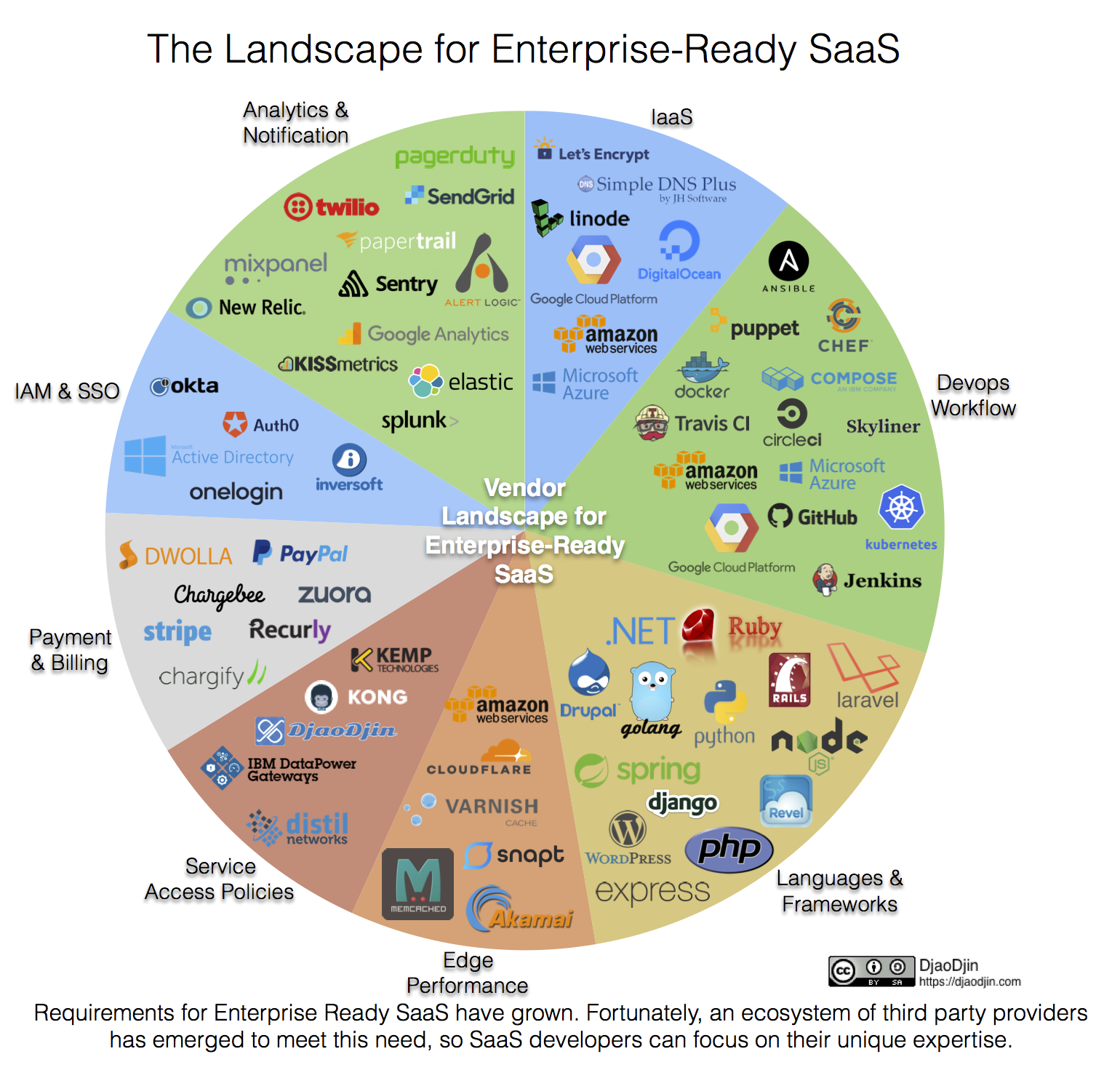Vendor Landscape for Enterprise-Ready SaaS
by David Schoenbach on Thu, 6 Apr 2017
 Enterprise-ready SaaS: The term suggest feature-rich, scalable, and secure
-- qualities at the core of any cloud-based service for enterprise customers.
But the bar is trending higher, and developers now have greater expectations
to meet as they set their roadmap for enterprise-ready SaaS.
Enterprise-ready SaaS: The term suggest feature-rich, scalable, and secure
-- qualities at the core of any cloud-based service for enterprise customers.
But the bar is trending higher, and developers now have greater expectations
to meet as they set their roadmap for enterprise-ready SaaS.
The folks at Replicated have laid out the features needed to make a SaaS application ready for the enterprise market here. (Thanks Replicated!) Their list includes:
- Product Assortment
- Single Sign On
- Audit Logs
- Role Based Access Control
- Change Management
- Product Security
- Deployment Options
- Team Management
- Integrations
- Reporting & Analytics
- SLA and Support
How-to Help
So now you know what you need to build. But what about the SaaS developer who doesn't want to build the whole thing her/himself? If you’re making the tough buy/build calls to keep your development roadmap manageable and focused on those components where you and your team add unique value, fortunately there are third party solutions for the other pieces of the development puzzle.
Below, we attempt to lay out the landscape for enterprise-ready SaaS, showing the various solutions vendors as they relate to specific items on the technology stack. (Yes, DjaoDjin is on the map!) Not comprehensive, it's our first stab. We've organized these services by categories reflecting the kinds of choices facing the SaaS CTO:
- IaaS (Infrastructure as a Service): Physical infrastructure, servers, network gear, DNS.
- DevOps Workflow: Products to implement software lifecycle management, from continuous deployment (build bots, containers provisioning, etc.) to data retention policies and encryption key rotation.
- Languages & Frameworks: Application programming languages, libraries and frameworks, including CMS.
- Edge Performance: Web performance, including load balancing, caching, CDN, routing, and reverse proxy servers for performance tuning.
- Service Access Policies: Proxies and reverse-proxies to filter requests before they reach the micro-services business logic. This includes IP-based and web application firewalls, as well as A/B testing products, session managers, role-based access control (RBAC), and subscription-based access rules common across SaaS products.
- Payment & Billing: Processing transfers (credit card, ACH, etc.), subscription and recurring billing, backlog and deferred accounting.
- IAM & SSO: Identity access management, single sign on and everything associated to user authentication.
- Analytics & Notification: Both marketing and operational analytics, including collection, aggregation, and reporting. Also, notification services (email, text, phone) -- these get triggered based on analytics reports so we lump them in this category.
Here’s what we’ve found:

If you think we are missing obvious products and services, contact us ! We plan to update this landscape from time to time, to reflect significant corrections and important changes in the ecosystem.
More to read
A couple other good resources: FounderKit has useful info on everything you need to build and grow your startup, and Programmable Web provides a broad list of web APIs.
If you are looking for related posts, Analysis of Runtime Behavior of Boutique Software-as-a-Service and Hiring a technical co-founder are good reads.
More business lessons we learned running a SaaS application hosting platform are also available on the DjaoDjin blog. For our fellow engineers, there are in-depth technical posts available.
Here’s the list of companies and services, with links:
Analytics & Notification
- Alert Logic
- Elastic
- Google Analytics
- KissMetrics
- Mixpanel
- New Relic
- PagerDuty
- PaperTrail
- SendGrid
- Sentry.io
- Splunk
- Twilio
Devops Workflow
Edge Performance
IaaS
- Amazon Web Services
- DigitalOcean
- Google Cloud Platform
- Let’s Encrypt
- Linode
- Microsoft Azure
- SimpleDNS
